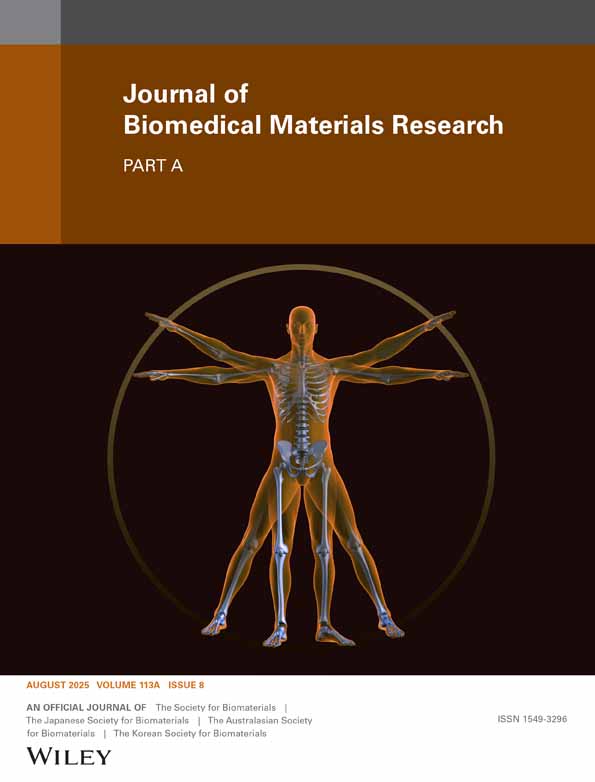Enhanced mineralized tissue adhesion to titanium over polystyrene assessed by the nano-scratch test
Abstract
The critical load determined by the scratch test is regarded to be a representative measure of coating adhesion in the field of engineering. This study aimed to evaluate the method for its usefulness for assessing the mineralized tissue-titanium interface strength. Osteoblastic cells derived from rat bone marrow were cultured on polystyrene, titanium-coated polystyrene, and titanium disks with either a machined or dual-acid etched surface. Nano-scratch testing was performed on mineralized tissue specimens at culture day 28. The scratch path was monitored by light microscopy until complete delamination of mineralized tissue from the substrate occurred, and the required force was recorded as the critical load. Energy-dispersive spectroscopic analysis was used to verify the delamination. The mean critical load values (± standard deviations) were as follows: polystyrene 31 mN (±1), titanium-coated polystyrene 67 mN (±4), machined titanium 76 mN (±4), DAE titanium 107 mN (±3), with statistical differences (P < 0.05; ANOVA). No elemental calcium and phosphorous were observed in the delaminated areas. The nano-scratch test applied to cultured mineralized tissue differentiated the critical load from various culture conditions: polystyrene vs. titanium; titanium with different surface topographies. Culturing mineralized tissue on titanium, especially on roughened surfaces, increased the tissue critical load. The nano-scratch test may be useful to evaluate mineralized tissue adhesion properties in titanium cultures. © 2005 Wiley Periodicals, Inc. J Biomed Mater Res, 2005




